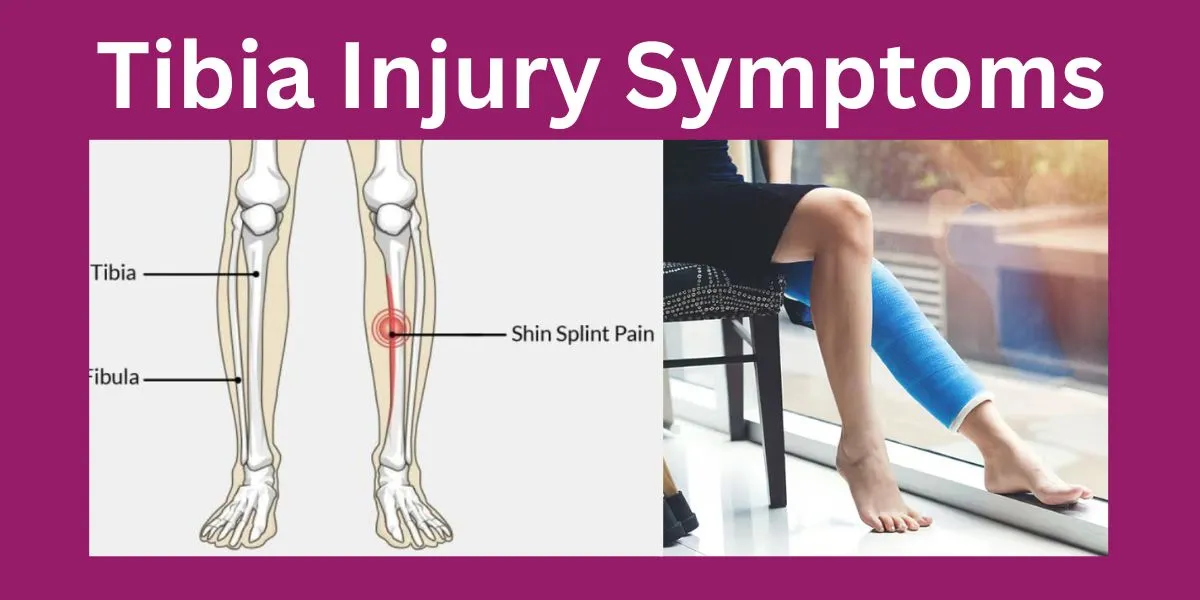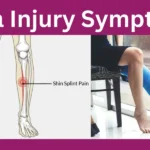Tibia injuries can be a real pain—literally. Whether you’re an athlete, someone who enjoys an active lifestyle, or you’ve simply taken a bad fall, a tibia injury can put a serious damper on things. But how do you know if you’ve injured your tibia? Is it just a bruise, or something more serious? Let’s dive into what tibia injuries are, the symptoms you should watch for, and how to manage the recovery process.
What Is the Tibia?
Before we get into injury symptoms, let’s quickly cover the basics. The tibia, also known as the shinbone, is one of the strongest and longest bones in your body. It’s located in your lower leg, running from your knee to your ankle. The tibia is crucial for supporting your weight and enabling movement, which makes it a vital bone in daily activities.
Types of Tibia Injuries
Tibia injuries can vary widely depending on the force of the impact or the cause. Let’s break down the most common types:
1. Tibia Fracture
A tibia fracture is one of the more severe injuries. It occurs when there’s a break in the shinbone, either from trauma, like a car accident, or a sports injury.
2. Stress Fracture
Stress fractures are tiny cracks in the bone that develop over time due to repetitive stress, often from running or jumping.
3. Tibial Contusion (Bone Bruise)
A bone bruise on the tibia happens when the bone gets injured without breaking. It’s less severe than a fracture but can still cause pain and swelling.
4. Tibial Plateau Fracture
This type of fracture affects the upper part of the tibia, near the knee joint. It’s usually caused by a high-impact trauma.
Key Symptoms of a Tibia Injury
Now that we know the common types of tibia injuries, let’s go through the symptoms you might experience. Remember, symptoms can vary depending on the severity and type of injury, but these are the key signs to look out for.
1. Pain in the Lower Leg
One of the first and most obvious signs of a tibia injury is pain in the lower leg. The pain can range from mild to severe, depending on the injury. If it’s a stress fracture, the pain might start gradually and worsen with activity.
2. Swelling
Swelling around the injury site is common with tibia injuries. If you notice your lower leg becoming puffy or swollen after a fall or collision, it’s a clear sign that something’s not right.
3. Bruising or Discoloration
Bruising is often associated with tibia injuries, especially with a bone bruise or a fracture. The skin around the injury may appear red, blue, or even purple, depending on the severity.
4. Inability to Bear Weight
If you find it difficult or impossible to put weight on your injured leg, this could indicate a fracture. A tibia fracture, in particular, makes standing or walking excruciating, and you may need crutches or a splint to move around.
5. Tenderness to Touch
If your shin feels tender or painful when you touch it, you might be dealing with a tibia injury. Even a light touch can cause discomfort if the injury is severe.
6. Limited Range of Motion
If your knee or ankle feels stiff and you can’t move your leg freely, it’s a sign that the injury could be affecting the surrounding joints. A tibial plateau fracture, in particular, can limit knee mobility.
7. Visible Deformity
In severe cases, such as a complete fracture, you may notice an obvious deformity in your leg. The bone may look out of place, or the leg may appear bent or misshapen.
Differentiating Between Mild and Severe Tibia Injuries
Not all tibia injuries are created equal. Some injuries, like a bone bruise, will heal on their own with rest, while others, like a full-blown fracture, require immediate medical attention. But how can you tell if your injury is mild or severe?
Mild Injuries
- Mild to moderate pain
- Swelling without intense pain
- Bruising, but no visible deformity
- Able to walk, though with some discomfort
Severe Injuries
- Intense pain that doesn’t subside
- Inability to bear weight on the leg
- Severe swelling and bruising
- Visible deformity or bone sticking out
Common Causes of Tibia Injuries
Knowing how tibia injuries happen can help you avoid them in the future. Here are some of the most common causes:
1. Sports Injuries
High-impact sports like soccer, football, and basketball put a lot of strain on the tibia. Sudden twists, jumps, and collisions can lead to fractures or stress injuries.
2. Falls
A hard fall directly onto your shin can result in a tibia injury. Falls from heights or awkward landings can easily cause a fracture.
3. Car Accidents
Car accidents are one of the most common causes of severe tibia fractures. The force of the collision can break the bone, often requiring surgery to fix.
4. Overuse
Runners and athletes who repeatedly strain their legs without enough rest can develop stress fractures. Over time, the small cracks in the tibia become painful and may lead to more severe issues if ignored.
Diagnosis of Tibia Injuries
If you suspect you have a tibia injury, seeking medical advice is essential. A doctor will typically begin by asking about your symptoms and how the injury happened. Then, they’ll likely perform a physical examination, followed by imaging tests.
1. X-rays
X-rays are the go-to diagnostic tool for tibia fractures. They provide a clear image of the bone, showing breaks, cracks, or deformities.
2. MRI Scans
MRI scans can provide more detailed images of soft tissues and bones. They’re particularly useful for detecting stress fractures or bone bruises that may not show up on an X-ray.
3. CT Scans
In severe cases, a CT scan might be necessary to get a 3D view of the injury, particularly for complex fractures.
Treatment Options for Tibia Injuries
The treatment for tibia injuries depends on the severity of the injury. Let’s look at some common treatment methods:
1. Rest and Immobilization
For mild injuries, like a stress fracture or bone bruise, rest is often the best treatment. Immobilizing the leg with a cast or brace will help the bone heal while preventing further injury.
2. Pain Management
Over-the-counter pain relievers like ibuprofen can help reduce pain and swelling. In more severe cases, a doctor may prescribe stronger medication.
3. Physical Therapy
Once the bone starts healing, physical therapy may be needed to regain strength and mobility. Exercises can help restore movement to the knee and ankle joints.
4. Surgery
In the case of a severe fracture, surgery may be required. Surgeons may insert rods, screws, or plates to stabilize the bone and ensure it heals properly.
Recovery Time for Tibia Injuries
Recovery time varies depending on the injury. Mild tibia injuries may heal in a few weeks, while more severe fractures can take several months to fully recover. After surgery, it may take up to a year to regain full strength and mobility.
When Should You See a Doctor?
If you experience any of the severe symptoms mentioned earlier—like intense pain, inability to walk, or a visible deformity—you should seek medical attention right away. Delaying treatment for a serious tibia injury can lead to complications, such as improper healing or long-term mobility issues.
Preventing Tibia Injuries
While not all tibia injuries are preventable, there are steps you can take to reduce your risk:
- Wear proper footwear during sports to cushion your legs and absorb shock.
- Warm-up before exercising to prepare your muscles and bones for activity.
- Strengthen your legs with exercises that target the muscles around the tibia, like calf raises and lunges.
- Avoid overtraining and give your body time to recover between workouts.
Conclusion
Tibia injuries can range from mild to severe, but recognizing the symptoms early is key to getting the right treatment. Whether it’s a stress fracture from overuse or a full-blown tibia fracture from a bad fall, knowing how to spot the signs will help you take action quickly. Don’t wait—if you’re experiencing pain, swelling, or difficulty walking, consult a doctor and get on the path to recovery.
FAQs
1. Can a tibia injury heal on its own?
Yes, mild tibia injuries like stress fractures or bruises can heal with rest and proper care. However, severe fractures may require medical intervention or surgery.
2. How long does it take to recover from a tibia fracture?
Recovery from a tibia fracture can take anywhere from 6 weeks to several months, depending on the severity and whether surgery was required.
3. What happens if a tibia fracture goes untreated?
If a tibia fracture is left untreated, it could lead to improper healing, chronic pain, and mobility issues.
4. Is it possible to walk on a broken tibia?
In most cases, walking on a broken tibia is extremely painful and not recommended. You’ll likely need crutches or a cast to support the healing process.
5. Can you still exercise with a tibia injury?
It’s best to avoid strenuous activity until your tibia injury has healed. Light, non-weight-bearing exercises like swimming may be possible with your doctor’s approval.










